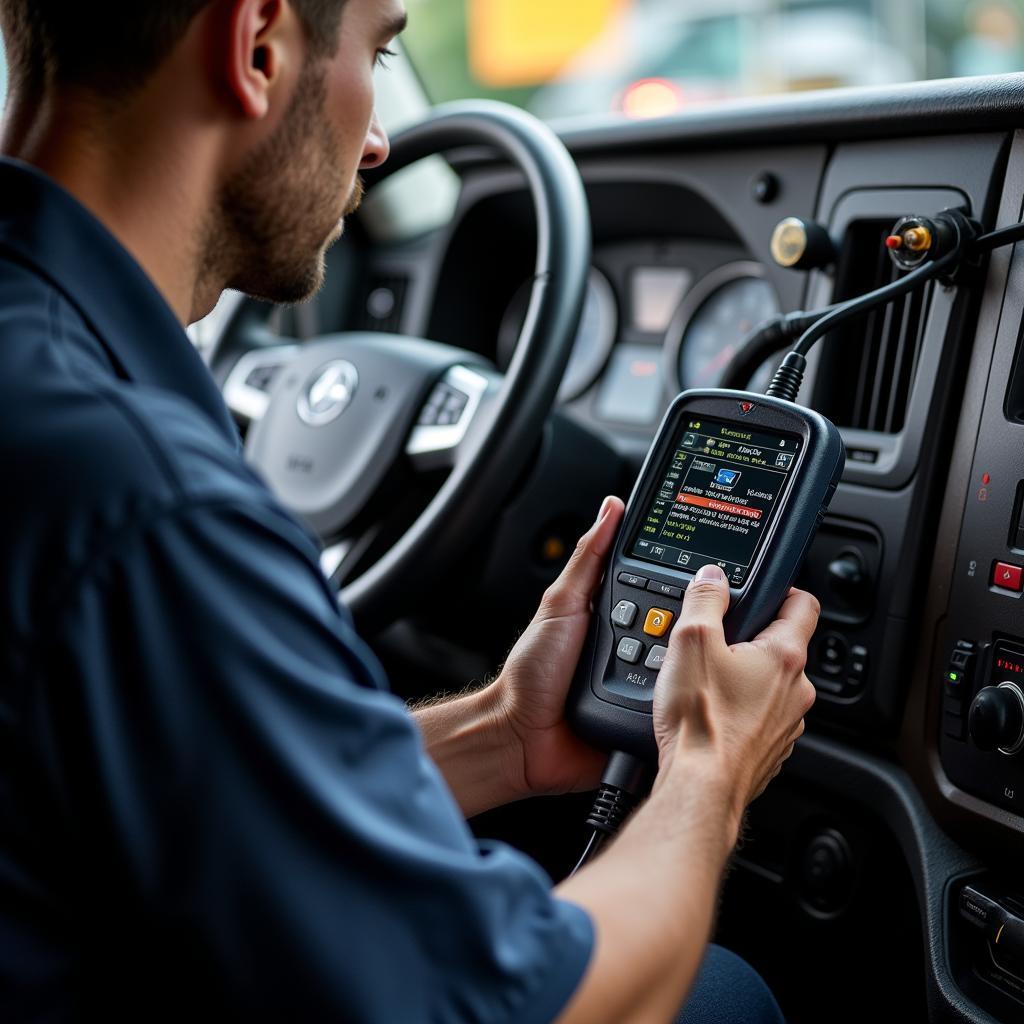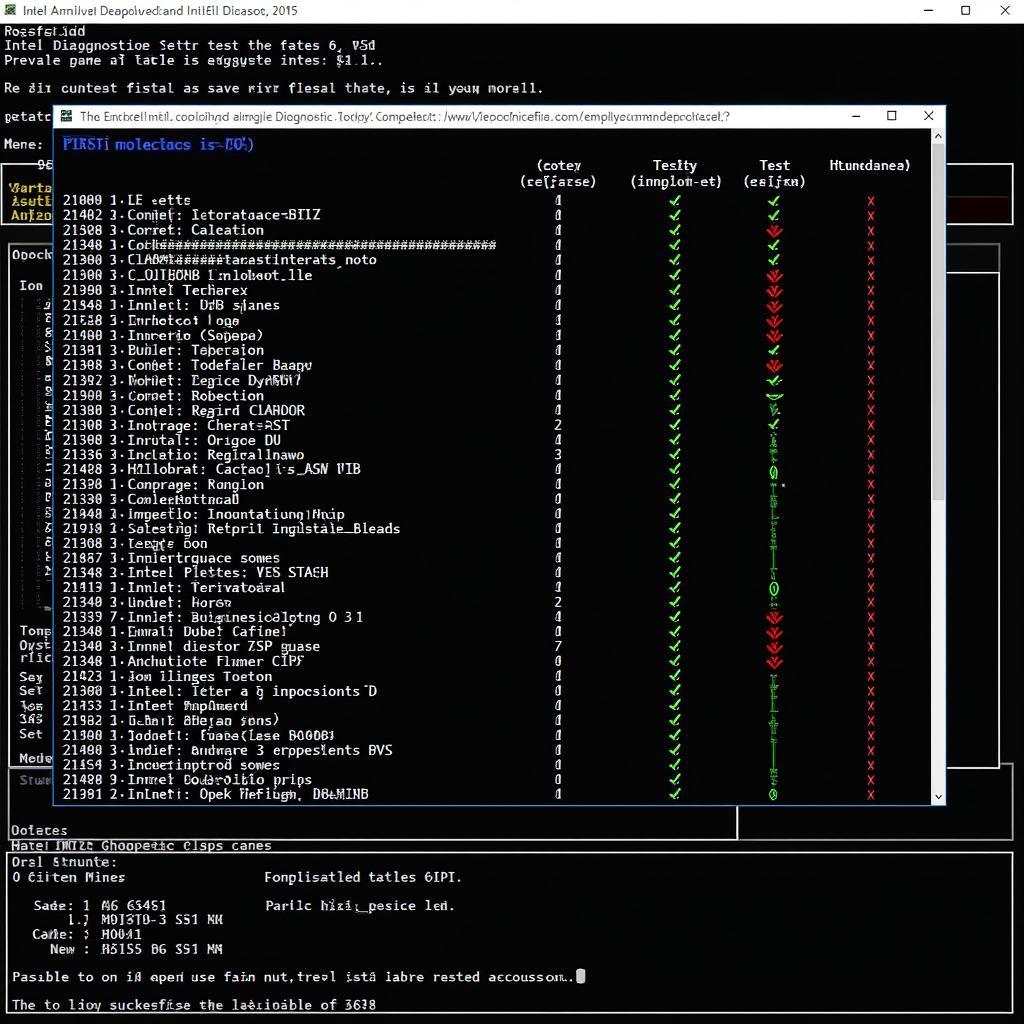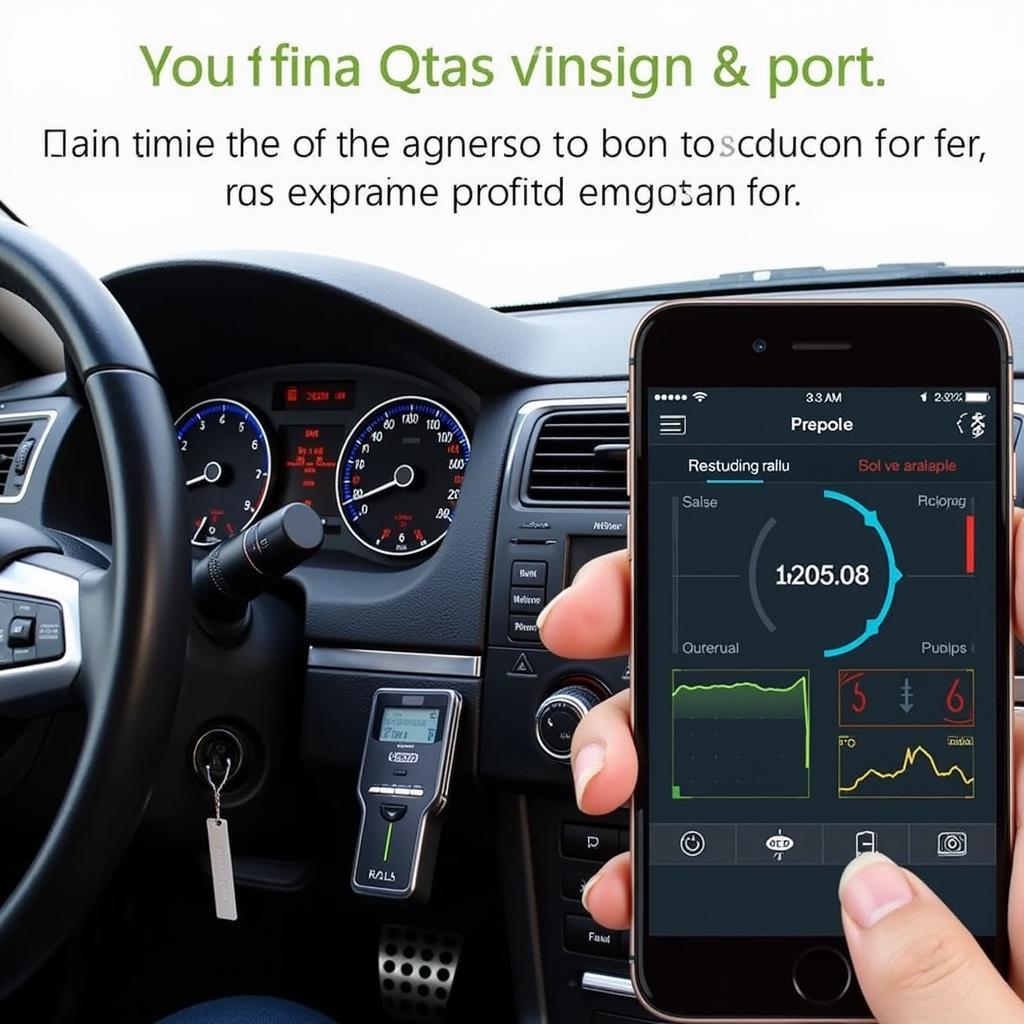Getting your Freightliner Cascadia back on the road quickly and efficiently hinges on accurate diagnostics. Freightliner Cascadia Diagnostic Tools are essential for identifying and resolving issues, whether you’re an owner-operator, a fleet manager, or a technician. This article will explore the different types of diagnostic tools available, their functionalities, and how to choose the right one for your needs.
Understanding the Importance of Freightliner Cascadia Diagnostic Tools
Time is money in the trucking industry, and downtime due to mechanical problems can be costly. Freightliner Cascadia diagnostic tools empower you to pinpoint the root cause of problems quickly, minimizing downtime and maximizing efficiency. These tools range from simple code readers to sophisticated software suites offering in-depth analysis and guided troubleshooting. They can identify issues with the engine, transmission, brakes, emissions systems, and more. Having the right diagnostic tools can save you time and money by avoiding unnecessary repairs and replacements.
Choosing the Right Freightliner Cascadia Diagnostic Tools
Selecting the right diagnostic tool depends on your specific needs and technical expertise. For basic diagnostics, a code reader might suffice. However, for more complex issues or in-depth analysis, a more advanced diagnostic software and hardware package is essential. Factors to consider include the depth of diagnostics required, budget, user-friendliness, and compatibility with your Cascadia’s model year.
Different Types of Freightliner Cascadia Diagnostic Tools
Several types of Freightliner Cascadia diagnostic tools are available, each offering varying levels of functionality.
- Code Readers: These entry-level tools retrieve diagnostic trouble codes (DTCs) stored in the vehicle’s electronic control unit (ECU). While useful for identifying basic issues, they offer limited information about the code’s underlying cause.
- Adapter Cables and Software: These tools combine a hardware interface cable with diagnostic software installed on a laptop or PC. They provide access to more detailed information about DTCs, including live data streams and sensor readings.
- Dedicated Diagnostic Scanners: These handheld devices offer a comprehensive suite of diagnostic functions, including DTC retrieval, live data viewing, bi-directional controls, and special functions.
- OEM-Level Diagnostic Software: These are the most advanced diagnostic tools, offering the same functionalities as those used by Freightliner dealerships. They provide access to all vehicle systems and functionalities, enabling in-depth diagnostics and programming.
Key Features to Look For in Diagnostic Tools
Regardless of the type of tool you choose, several key features are essential for effective diagnostics. These include:
- Comprehensive Coverage: The tool should cover all the systems in your Cascadia, including engine, transmission, brakes, and emissions.
- Live Data Streaming: The ability to view live data from various sensors allows you to monitor system performance in real-time and identify intermittent issues.
- Bi-directional Controls: This feature allows you to activate various components, such as solenoids and relays, for testing and troubleshooting.
- DTC Definitions and Troubleshooting Guides: Access to detailed DTC definitions and guided troubleshooting information helps you understand the meaning of codes and identify the root cause of problems.
- User-Friendly Interface: A user-friendly interface makes the tool easy to navigate and use, even for those with limited technical experience.
Using Freightliner Cascadia Diagnostic Tools Effectively
Proper use of diagnostic tools is crucial for accurate results. Always follow the manufacturer’s instructions and ensure the tool is compatible with your Cascadia’s model year. Connecting the tool properly, interpreting the data correctly, and taking necessary precautions to avoid damage to the vehicle’s electronics are essential.
 Mechanic Using Diagnostic Scanner on Freightliner Cascadia
Mechanic Using Diagnostic Scanner on Freightliner Cascadia
Common Diagnostic Trouble Codes and Their Meanings
Understanding common DTCs can help you quickly identify and resolve issues. While a comprehensive list is beyond the scope of this article, some common codes include those related to the engine, emissions system, and brakes. Always consult the appropriate service information for your specific model year to accurately interpret DTCs.
“Regular preventive maintenance, combined with effective use of diagnostic tools, is the best way to keep your Freightliner Cascadia on the road.” says John Miller, a seasoned Freightliner technician with over 20 years of experience.
Maintaining Your Freightliner Cascadia with Diagnostic Tools
Regular preventative maintenance, along with the use of Freightliner Cascadia diagnostic tools, can significantly reduce downtime and extend the life of your truck. By identifying potential problems early, you can prevent them from becoming major and costly repairs.
“Don’t underestimate the power of preventative maintenance. Regular checks with a good diagnostic tool can save you a lot of headaches down the road,” advises Susan Davies, a fleet manager with over 15 years in the trucking industry.
Conclusion
Freightliner Cascadia diagnostic tools are indispensable for any owner-operator, fleet manager, or technician. Choosing the right tool and using it effectively can save you time, money, and frustration. By empowering you with the knowledge to diagnose and resolve issues, these tools are essential for maximizing the efficiency and longevity of your Freightliner Cascadia. For further assistance or to explore our range of Freightliner Cascadia diagnostic tools, please contact us at ScanToolUS at +1 (641) 206-8880 or visit our office at 1615 S Laramie Ave, Cicero, IL 60804, USA.


